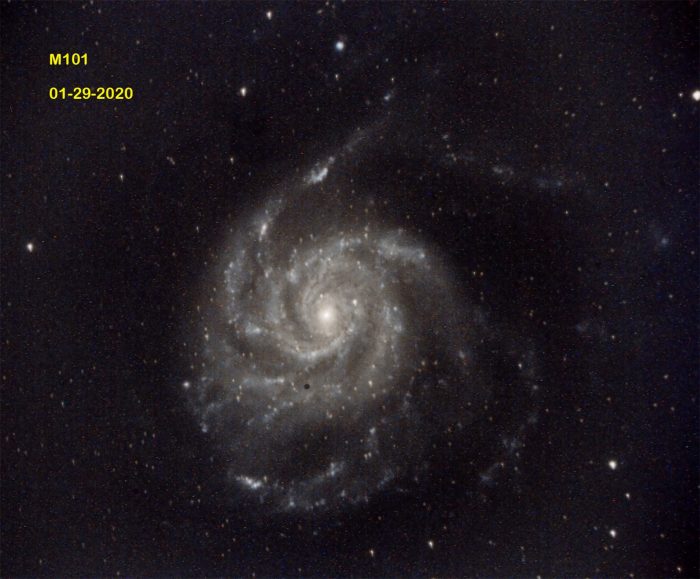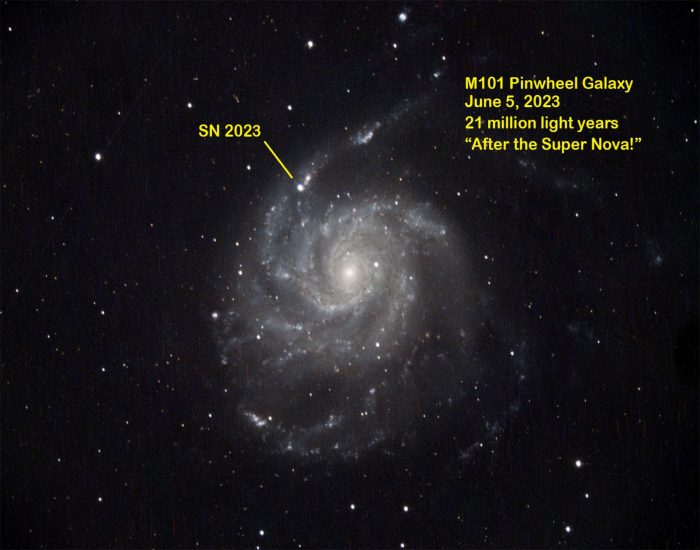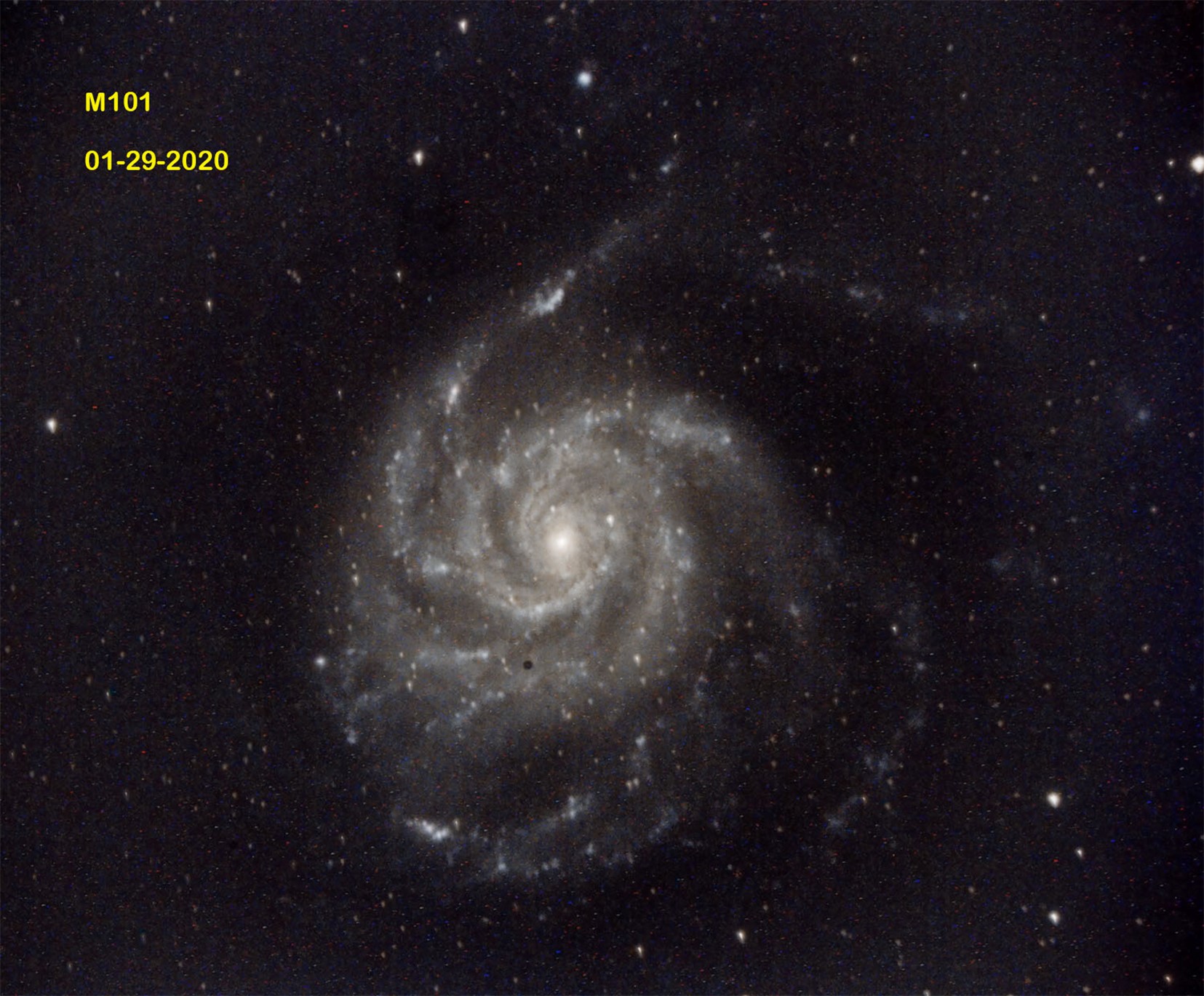Below there are two images I took of M101, the Pinwheel Galaxy. One was taken several years ago and shows M101 in its normal stage. The other one was taken on June 5, 2023, a little more than two weeks after a supernova explosion was discovered by astronomers in Utah.


Supernovas occur at the end of a large star’s life. When the star runs out of fuel, it sets off a chain reaction that causes the core of the star to contract and then explode releasing more energy than the Sun produces in 10 billion years!
When SN 2023 ISF was discovered, it had a visual magnitude of +14.9. Later reports suggest that its brightness increased for several days, reaching a peak of +10. That might not sound very bright, but the Milky Way, which is 100,000 light years in diameter, has literally thousands of stars with visual magnitudes greater than +14.0. Some of those very faint stars are not visible with my 11” telescope. When you consider that M101 is 21 million light years away from us, and you can easily see this single star through a 5” telescope, it should give you a better handle about how massive of an explosion this was.
Now consider this: It’s believed that Betelgeuse, a giant red star in the constellation Orion, is approaching the end of its life cycle. Most scientists believe it will become a supernova in the near future. Some experts predict this will not happen for 100,000 years, but new studies predict the explosion could be within 10 years. Betelgeuse is only 600 light years away from us – it could be a great light show!
What you can look for in July’s Night Skies
Four planets can be viewed in the early morning skies. Saturn rises at 11:31 p.m., Neptune at 12:22 p.m., followed by Jupiter at 2:12 a.m., and Uranus at 2:46 a.m. Remember Saturn, Jupiter, and Uranus can all be viewed with the naked eye if the skies are clear. You’ll need a good pair of binoculars or a telescope to see Neptune.
Look for Venus and Mars in the evening skies Venus will be about 26° above the western horizon and Mars will be about 3° higher.
The red, super giant star Antares will be visible in the evening skies. It’s a magnitude +1 star so it’s easy to see. On July 1, look for it just above and slightly to the south of the moon. Antares looks like Mars’s brother. In fact, its name means “rival of Mars”.
Like Betelgeuse, Antares is on the list of stars that will probably become supernovas in the near future. Unlike Betelgeuse, Antares is expected to last another million years before exploding (remember astrophysical time makes geologic time seem fast)!
The region of sky right around Antares is full of irradiated gas that creates an emission nebula. And just above Antares is the Rho Ophiuchi reflection nebula. It has a visual magnitude of +5.1, so you should be able to see it with your naked eye, but I don’t remember ever being successful at that.
The Perseids meteor shower begins on the night of July 14. Even though the peak activity isn’t until August, you can still see flurries of shooting stars in the second half of July. The Perseids should be visible after 10:00 p.m. on the 14th. Simply look just above the northern horizon. The best viewing will be around 4 a.m. when the center of activity will be about 36° above the NE horizon.
Moon Phases:
Full Moon is July 3
Last Quarter is July 9
New Moon is July 17
1st Quarter is July 25



